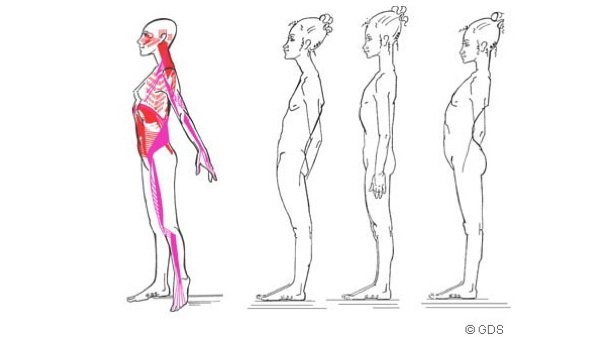Benjamin Amram

Osteopathy is a medicine that aims to restore mobility to areas of the body that are blocked. These blockages can be located at the articular, visceral, cranial level and on all the tissues that envelop the body. We will focus here on the articular adjustment of the spine, the essential axis of mobility.
The interest of this presentation lies in the benefits of a specific spinal adjustment that takes into consideration the laws of gravity, according to the work of John Martin Littlejohn, the most brilliant student of the founder of osteopathy Andrew Taylor Still.
Of Scottish origin, John-Martin Littlejohn (1865-1947) was a physician and osteopath. He studied the relationships between the different levels of the spine and the body's organs, as well as man's adaptation to verticality. Littlejohn's biomechanical vision is based on the lines of gravity that run through the body. These lines intersect and form two pyramids with a triangular base that are opposite each other at the fourth dorsal vertebra and the heads of the third ribs, the area between the shoulder blades. The balance of the body depends on the balance of these two pyramids.
Without going into the details of the biomechanical concept, let's remember that if the anatomical zones that constitute the pyramids are mobile, then harmony can be expressed. A joint blockage can literally change the body's supports and move the patient's center of gravity. Two types of posture are possible depending on the different combinations of mobility restriction:
The anterior type:
The anterior type corresponds to a patient profile that is slightly bent forward. This posture puts pressure on the abdominal wall, especially at the pelvic ligaments, making the area painful and can lead to inguinal hernias, visceral ptosis and bladder irritation, among other things.
Posterior type:
The posterior type corresponds to a slightly backward leaning patient profile. This posture puts pressure on the abdominal and pelvic viscera and on the blood flowing through this region. Such a malposition leads to neurasthenia, i.e. general fatigue associated with sleep disorders and a state of dejection and sadness. Moreover, with a compression on the viscera and a vascularization of the disturbed area, one can encounter problems such as constipation, hemorrhoids or even dysfunctions at the level of the uterus.
In these two cases, the thoracic and abdominal pressures are disturbed. The result is a disruption of the balance between these two manometric enclosures, which can lead to alterations in one or more of the systems that make them up, such as breathing or digestion.
Furthermore, these anterior or posterior profiles induce compensation phenomena that place the body in vicious positions. An example of compensation to the malposition of the body is the placement of the head in hyper extension, which tires the cervicals, gives headaches and weakens the eyes.
The specific spinal adjustment will therefore allow the patient to regain a balanced static and dynamic position. To maintain this state,
the treatment continues with posturology exercises.
With a precise and holistic diagnosis that also takes into account the plantar supports, the eyesight and the jaw joint, this approach allows us to strengthen our supports and thus refocus our energy in order to move in a harmonious way.
Harrison H. Fryette, who developed the main principles of biomechanics, osteopathic physician, holder of the Department of Osteopathic Technique of the Chicago College of Osteopathic Medicine in the United States in 1920 said:
"Gravity is one of the factors that impedes circulation. Gravity kills your patient. Gravity is an inexorable factor. It is the one that loads the supporting structure with a constant weight. "
Benjamin Amram, Osteopath D.O.


